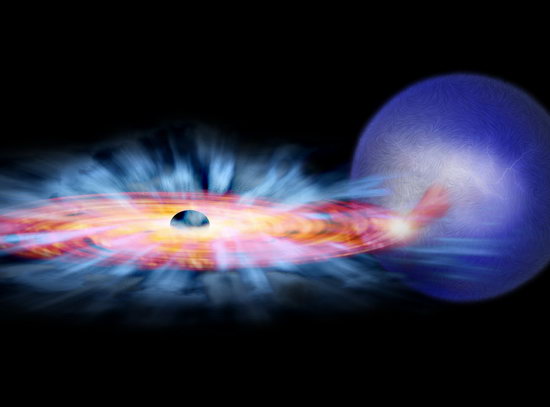Research
The focus of my research to date has been on the investigation of close interacting binary stars such as cataclysmic variables (CVs) and low mass X-ray binaries (LMXBs). An important reason to investigate these objects is that they provide an unparalleled way to study two fundamental astrophysical processes: binary star evolution and nearly all aspects of the accretion of gas onto compact objects. Binaries are of fundamental importance to astronomers because they allow stellar masses, radii and luminosities to be measured directly and can also be used as distance indicators for nearby galaxies that are resolved into individual stars. In addition, accretion power – the extraction of energy from matter moving in a gravitational field – drives some of the most powerful energy sources in the Universe. Accretion discs can be found in a wide variety of environments, from the small discs around compact stars and protostars, to the massive discs around black holes in the centre of galaxies.
Credit: NASA/CXC/M.Weiss
Our general understanding of binaries with compact components and theoretical progress is often driven by new observational discoveries. In order to enhance our theoretical understanding of accretion, I have observed the principal objects whose behaviour is a real challenge to existing theories.
In the following subsections of this website, I have summarized my current research interests:
- Late evolution stages of CVs.
- CVs with puzzling periodic photometric and spectroscopic variabilities.
- Mass distribution of compact objects as a probe of massive star evolution.
- Accretion disc structure and its evolution through an outburst cycle.
In addition, I have done some work on the study of pulsars in the optical regime using high time resolution photometers. Also, as a member of the MAGIC collaboration, which operates two 17-m Cherenkov telescopes on La Palma, I am involved in data interpretation for MAGIC, where my scientific interests focus on the physics of galactic gamma-ray sources.

